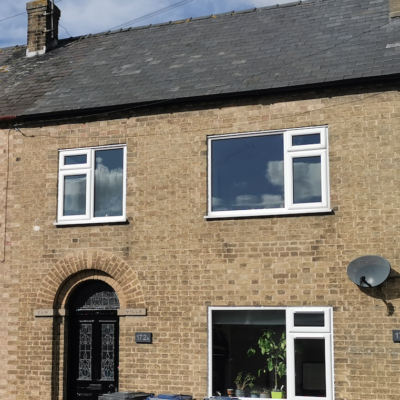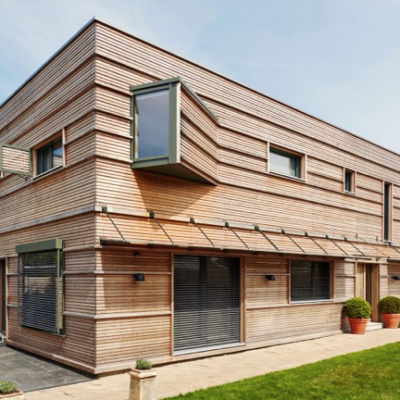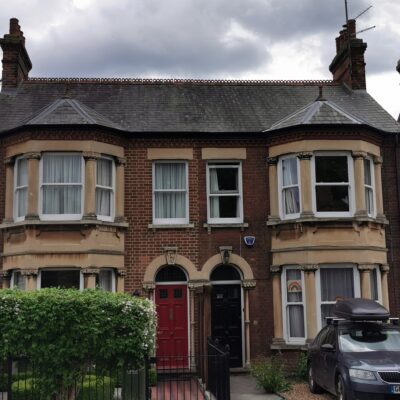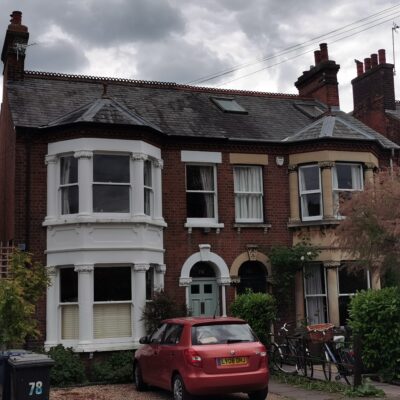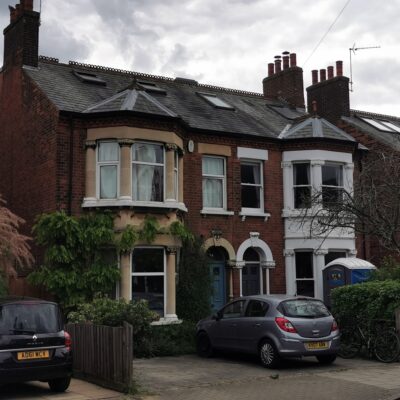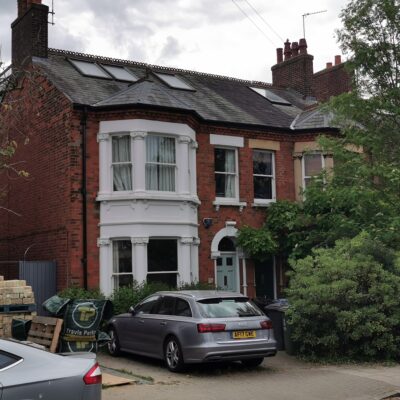Search by topic
- archaeology
- architecture
- bricklayer
- Building of Local Interest
- carpenter
- church
- crime
- dressmaker
- fire
- Great Eastern Railway
- listed building
- medieval
- oral history
- Public House
- Rattee & Kett
- Religious House
- Roman
- scholar
- school
- Then and Now
- tudor
- women
- work
- world war one
- world war two
Search by text
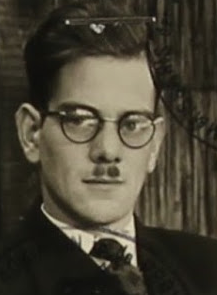 Engelbertus Fukken, alias Jan Willem ter Braak
Engelbertus Fukken, alias Jan Willem ter Braak58 St Barnabas Road
History of 58 St Barnabas Road
1913 Kellys
G R Hattersley
1935 via SMS
Alfred Sennitt and Kate [ex Miller née Harding] move into this property circa 1935. Kate was a widow, her husband Leonard Lantaff Miller had died from his injuries fighting with the Ling’s Liverpool Regiment in northern France. Kate had lived at 15 Ross Street.
SMS wrote in 2021:
After her husband’s death, Kate Emily Miller was devastated by his loss and that her son, just a 2 year old child, had lost his father. The family rallied round, and between them, they helped her to carry on, and frequently had my father to stay with the different family members. At some point, Kate met Alfred Langford Sennitt, born 25th December 1873 in Stretham, Cambridgeshire, and they married on 14th May 1923 in the Parish Church, Brighton. Kate was 34 and Alfred was 49. He was a bachelor, and was the son of the late George Henry Sennitt, born 1841 died 1893, and Sarah Sennitt, nee Langford born 1841. George had been a Master Butcher and many of the Stretham Sennitt family were either farmers, poulters or butchers. Sarah Sennitt, together with Alfred had a slaughterhouse in Covent Garden just off the Mill Road, and also a butcher’s shop nearby.
I don’t know when they moved into 58 St. Barnabas Road, but in the UK, City and County Directory, they are shown to be living there in 1935. They continued to live there until 1961 when he entered The Evelyn Nursing Home, Cambridge. Alfred died on 26th November 1961 aged 87. Alfred and Kate had a child in 1925, and his name was Alfred Henry Sennitt. He was 9 years younger than his half-brother, Reginald Leonard Miller. He worked for his father in the Butchers Shop at some time, but I believe became a Messenger boy for the Civil Service later. He married Audrey May Sanderson born 1923, and they lived at 98 Gilbert Road, Cambridge, together with their 5 children. Alfred Henry Sennitt died on 25th February 1979 at Papworth, and Audrey May Sennitt died 10th April 2011 in Cambridge.
As a child I used to sometimes stay at 58 St. Barnabas Road, Cambridge. It was quite a large house, with a front sitting room, another large room at the back of the sitting room, and then a kitchen and a scullery. The stairs went up from the hall to the first floor, with a door at the top of the stairs. There were several bedrooms and a bathroom on that floor. I believe there were more rooms up on the 2nd floor, although I don’t remember seeing them. The house was joined to properties each side, with a walkway through to the back garden for every other house. I remember the back garden was a long narrow garden, with a wartime shelter opposite the scullery. My brother and I used to go down into the shelter, but it was very dark and damp, and quite an unpleasant place to go into. Grass covered the top and sides of the shelter, and there were lots of daisies that grew there. Behind the end of the gardens, was the railway lines and the shunting yards. It was very noisy at night, especially if your bedroom was at the back of the house. My grandmother had one or more house servants, and she and Alfred took a lot of holidays, down to Brighton or Bournemouth. They travelled in a chauffeur-driven car, and sometimes when I was young, my parents and my brother also went to stay in Bournemouth, and we would travel there on a train. This was in the late 1940s, and Alfred would pay for our holiday, although we stayed in another guesthouse, while they were in a better hotel. My grandmother became used to having all the best things in life, and Alfred spoiled her. She loved to play cards on a Saturday evening, and I can see her now, smoking a cigarette with something alcoholic in her other hand, with a pile of pennies that she had won at cards. My father as a young boy had been sent to Newport Grammar School, so wasn’t home that often, but I am told that he played the piano, although I was never privileged to hear him, but apparently there were about 3 pianos in the house. When Alfred became ill in 1961 and went into the Evelyn Nursing Home, he passed away quite quickly. My grandmother found life rather difficult without him, and she began to deteriorate. Both my father and his half brother Alfred decided that she would have to move out of the big house, as it was too much to manage, and she moved into a ground floor maisonette. She lived there for a few years, and then my father brought her to live with us in Felsted. By this time, sadly she was suffering from dementia, and she was taken into St. Michael’s Hospital, in Braintree, Essex, where she died on 16th December 1968 from Bronchial Pneumonia.
That is about as much as I can remember about the house at 58 St. Barnabas Road, Cambridge, and also of Alfred Langford Sennitt. He found that he couldn’t cope with children very well, having been a bachelor until he was almost 50 years’ old, and so I don’t think that my brother and I knew him that well, but I think he knew his own son’s family better. I do remember he had a bushy moustache which became grey, but was also stained by cigarette smoke. I wonder really how Alfred and Kate came to be duped by this German spy in November 1940, as Alfred ran a successful business. I also wonder why my father [Reginald Leonard] never mentioned anything about it, and he must have been aware of them having a lodger. My father had joined the RASC in September 1939 and spent the next 3 years or so working in England at various depots around the country. I know he was in Oswestry for a time, and also up in Northumberland, but by 1943, he was selected for officer training, and he did that in Southend-on-sea, before being given the rank of 1st Lieutenant in October 1944. He was then sent out to Italy in November 1944, spending 6 months in the North East of Italy before being sent to Austria, and finally returning home as a Captain and being demobbed in April 1946. Unfortunately, my mother passed away aged 60 in 1977 and my father remarried. Later on he developed dementia, and died in Broomfield Hospital, Chelmsford from lung cancer on 2nd June 1991, so even if he knew what had happened at 58 St. Barnabas Road, by the late 1980’s, he would probably have forgotten about it.
1939 UK Register
Alfred S Sennitt, b 1873, master butcher
Kate E, b 1889
Doris Towers, b 1902, servant
The following is an extract from the Wikipedia article about Jan Ter Braak. There has been a long held belief by some that it was because of his information that the Shrove Tuesday 1941 bombing raid on the Hills Road area took place. The book, ‘Traitor, Lodger, German Spy’ by Tony Rowland (2018) is a fictionalised account of Ter Braak’s time in England using the known facts.
Jan Willem Ter Braak was a German spy who arrived in England by parachute on a night between 31 October and 2 November 1940, landing near Haversham in Buckinghamshire. His parachute was discovered on 3 November but Ter Braak was not found. He had in fact made his way to Cambridge, where he arrived on 4 November. It is not clear where he stayed in the few days after his arrival in England. In Cambridge he found lodgings with a couple named Sennitt at 58 St. Barnabas Road, who accepted his story of having come from the Netherlands during the Dunkirk evacuation, having lived after that in two other places in South-England. He claimed to be working with Free Dutch forces in London on a Dutch newspaper.
Despite his false identity papers, Ter Braak was able to rent an office above the renting firm Haslop & Co in Green Street. As an alien from an occupied country, Ter Braak’s residence should have been registered with the police, but he did not do so. His landlord did tip the Aliens Officer off that a Dutch national was living with him, but the police did not follow up and speak to him, saying that they were sure he would register before long. He spent most of the day out of the house but never spent a night away, and supported himself from a large amount of cash which he had brought with him and which included United States Dollars. He left his office behind already in December 1940. He had installed his suitcase transmitter in his room in St Barnabas Road but around Christmas the batteries had been running down, so since then he could only communicate with the Abwehr in Hamburg by letters, written with secret ink. Sometimes he made daytrips by bus or train to small cities in the neighbourhood as Bedford and also several times to London, where he probably inspected the effects of the bombardments on buildings and the citizens.
In January 1941, Ter Braak was contacted by the Food Office about his ration card, which its records showed had been issued to a man named Burton living in Homefields, Addlestone, Surrey. This was because the card had been supplied by the Abwehr using numbers given by the double agent SNOW (Arthur Owens). Ter Braak evidently suspected that he would be detected, and told his landlady that he had to leave for London. However, he relocated to 11 Montague Road.
1962 Kellys
Alfred Langford Sennitt
Contribute
Do you have any information about the people or places in this article? If so, then please let us know using the Contact page or by emailing capturingcambridge@
License
This work is licensed under CC BY-NC-SA 4.0









